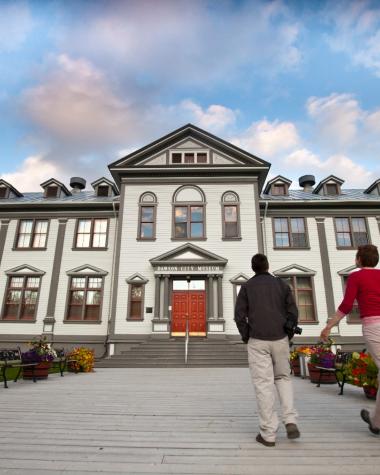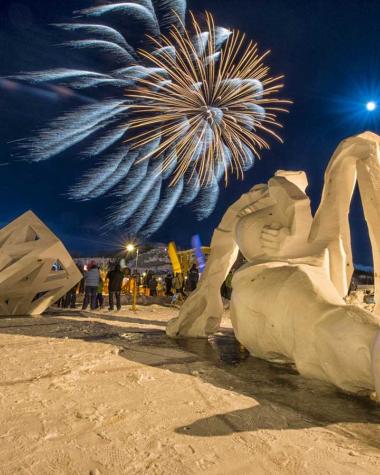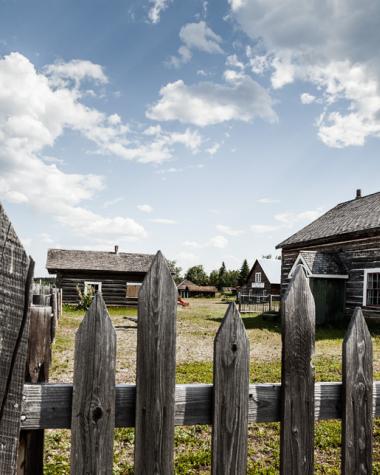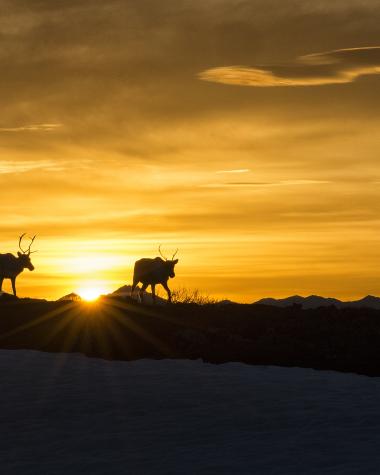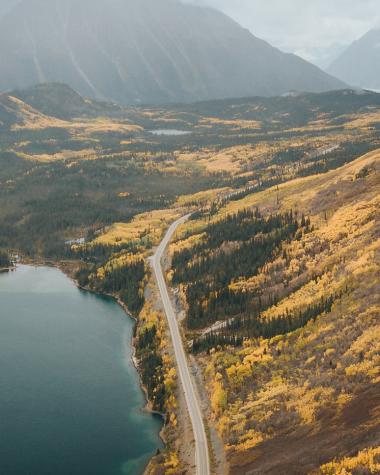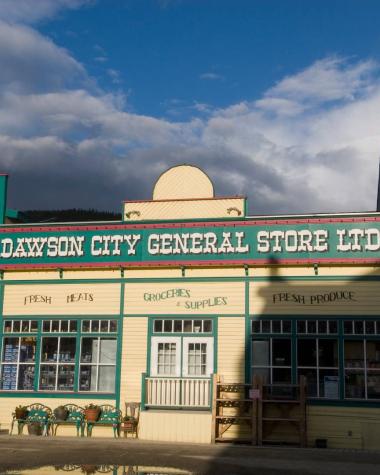
Book Club We Fought the Road - Christine and Dennis McClure
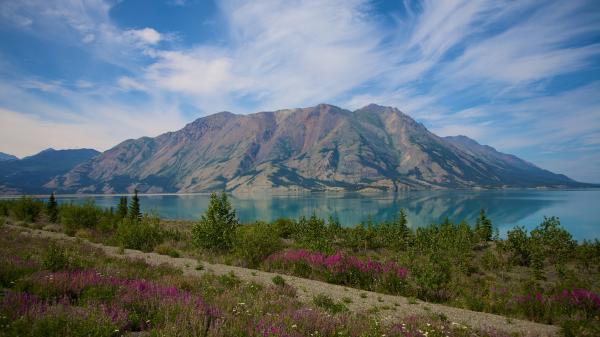
Explore the Book
U.S. Troops were assigned to the North. In just nine months with little to no engineering know-how, they banded together to build the impossible — 2,400 km (1,500 miles) of highway from BC to Alaska. Follow the course of this historic highway through on-the-ground reports and the experiences of Timber, an American soldier sent to the Yukon.

Highlights
Nearly 11,000 soldiers worked on the construction of the Alaska Highway, with crews from the north and the south finally meeting on September 24th, 1942 at a landmark named Contact Creek.
“From both sides of the little creek, wildly happy soldiers competed to see who could yell the loudest….who got there first and who built the most miles.”
The soldiers may be long gone but watch out for the resident bison herds who call the highway their own.
Not far from Contact Creek lies the town of Watson Lake. While working in Watson Lake, U.S. soldier Carl Lindley felt homesick and added a sign from his hometown to an army mileage post. He started a travelling trend that grew from a single post into what is now known as the Sign Post Forest. Look close enough and you might spot your own piece of home.

The soldiers may be long gone but watch out for the resident bison herds who call the highway their own.
Not far from Contact Creek lies the town of Watson Lake. While working in Watson Lake, U.S. soldier Carl Lindley felt homesick and added a sign from his hometown to an army mileage post. He started a travelling trend that grew from a single post into what is now known as the Sign Post Forest. Look close enough and you might spot your own piece of home.

Work Hard. Play Hard.
Continue your Alaska Highway journey to Jake’s Corner and take a detour down the army supply road to the trading post of Carcross. Home to the Carcross/Tagish First Nation in the heart of the Southern Lakes region, in WWII it was a staging camp for soldiers as they arrived on the White Pass Train.

The Caribou Hotel & Bar and its grand piano soon became the soldiers’ spot for good times. Some of the Black regiments were not allowed into the bar, but this did not stop them. The piano was rolled out and bands were formed, giving way to musical performances on the street to liven up weary spirits.
Carcross is a bustling adventure gateway in the summer months. From the local boutiques at the Carcross Commons to the endless mountain biking trails, the Hotel & Bar is not the only happening place to pass the time away.

A true test of true love
“In a murky arctic snowstorm at Beaver Creek...in the wilds of the Yukon, the climax of building the Alcan Highway was reached at 4pm Sunday, October 25th.”
The highway now complete, soldiers were left in roadside camps awaiting news to go home. With the prospect of a dark winter looming, personal letters from Timber to Helen highlight the frustrations.

“Gosh honey, you should be here now...last nite she was colder than heck, and tonite it’s getting set for another rough session with ole man winter leading the way.” (Nov 2, 1942)
Due to extreme snowstorms, the highway’s opening ceremony was delayed until November 20th,1942. The event of 200 attendees was detailed in reports to have had tortuous winds at -15º Celsius and below. Today you can hike a small hill from the highway to the Soldiers Summit memorial. Take in the views without the biting wind chill and see the highway curve around the magical Kluane Lake. Then continue north to its final Yukon destination of Beaver Creek, a quirky community where remnants of abandoned military vehicles still remain.

Coming to grips with the Yukon
Many of the soldiers that worked on the Alaska Highway came from the southern U.S. and had never experienced a cold northern climate. On the highway’s last gap near White River, men struggled to adapt to the cold and ice, with many stories of northern exposure gone wrong.
“I have seen tools, chains, men, and even trucks sliding down a hill faster than a man could run.”
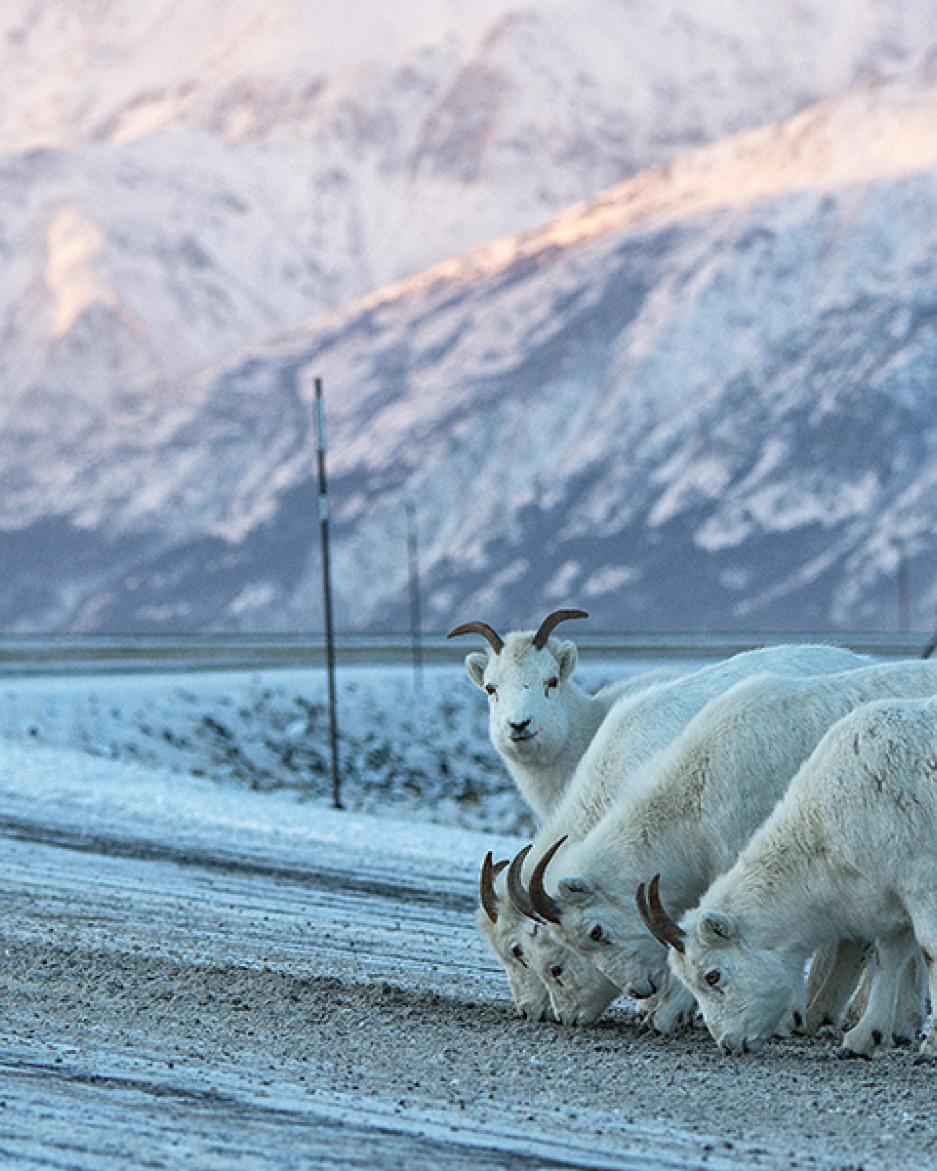
Timber sent back photos of his winter tent to Helen, describing the makeshift showers and other tricks like crafting double mummy sleeping bags and stuffing evergreen needles inside boots. They had to be especially savvy with soup can gasoline mixes to keep their engines from freezing.
These days, Yukoners take the change in seasons in stride and don’t always need to rely on military know-how. If you arrive in the Yukon and need extra gear, there’s plenty of local stores to lend a helping hand.

Discussion Questions
It is important to note that a recurring theme of the book is the racial segregation of the U.S. Army. African American soldiers worked and lived separately from other soldiers, with inferior tools and living quarters. On completion of the highway, the Black regiments were commended for their contribution. Going beyond the build, their work played an influential role in the desegregation of the U.S. military in 1948.
Now that you know the history, here are some questions for you and your fellow comrades...
- Imagine yourself as a young soldier sent to the Yukon. How do you think you would perform under pressure in a harsh environment with no engineering experience?
- In the 1940s, the only way to communicate with loved ones back home was by letter. What kind of stories would you share if you put pen to paper?
- The building of the highway opened up positive economic and social opportunities in the Yukon, but for many First Nations peoples, it impacted traditional ways of life in a negative way. Can you think of examples of how life would have been different when the highway opened?



